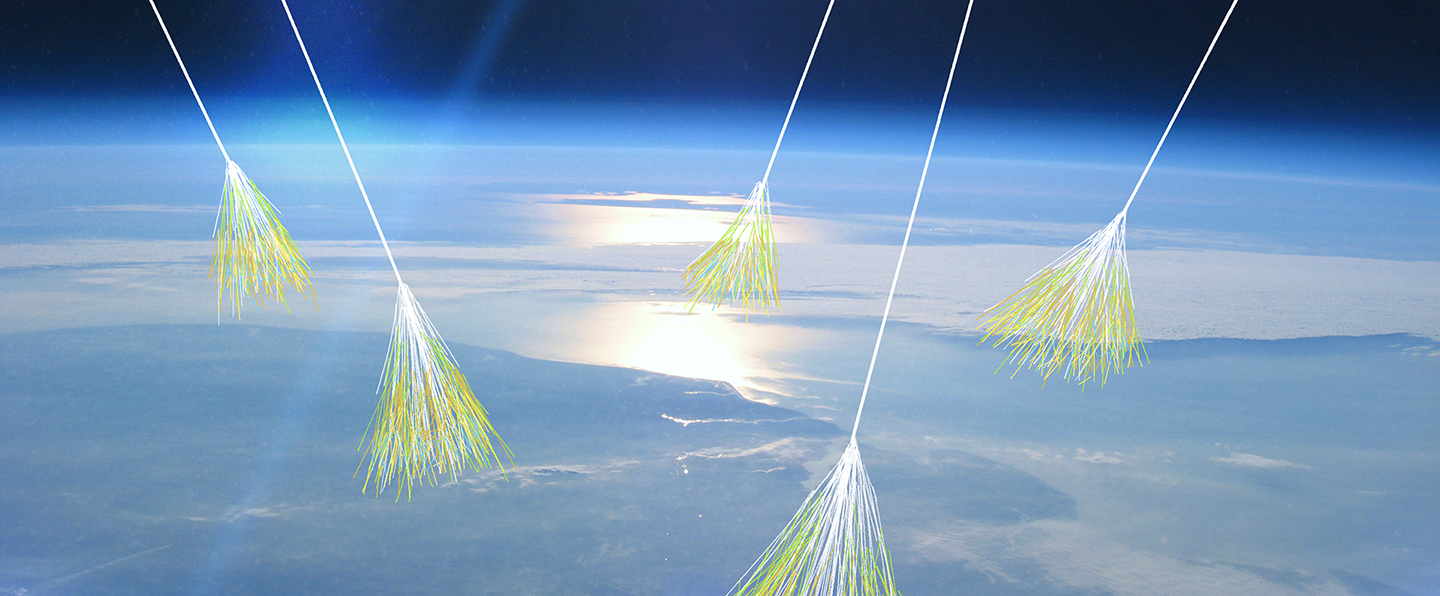The enigmatic world of cosmic phenomena often conjures a whirlwind of curiosity and inquiry, particularly surrounding the nature of cosmic rays and their intrinsic constituents. A pivotal question emerging from this domain pertains to the relationship between cosmic rays and photons. The straightforward inquiry, “Is a cosmic ray a photon?” serves as a gateway to a more profound exploration of high-energy particles and electromagnetic radiation. To address this inquiry adequately, it is essential to delineate the definitions and characteristics of both cosmic rays and photons, followed by an investigation into their interactions and implications within the cosmos.
To begin with, cosmic rays are high-energy particles that traverse the universe, predominantly originating from astrophysical phenomena such as supernovae, active galactic nuclei, and even the sun itself. Unlike typical radiation, which often involves electromagnetic waves, cosmic rays are fundamentally composed of various particles: protons, atomic nuclei, and, in lesser quantities, heavier ions and electrons. These particles can possess energies exceeding billions of electron volts, promoting interaction with matter and electromagnetic fields as they propagate through space.
Contrastingly, photons are quantized packets of electromagnetic radiation, ubiquitous in contemporary physics and vital in the transmission of energy across the electromagnetic spectrum. They are massless particles characterized by their unique properties, such as traveling at the speed of light in a vacuum and exhibiting both wave-like and particle-like behavior—a phenomenon that has fascinated physicists since the dawn of quantum theory. Photons are responsible for mediating electromagnetic force and facilitate essential processes such as photosynthesis in plants and the transmission of information through fiber optics.
The essence of the question arises from a fundamental misunderstanding regarding the nature and categories of matter and energy. Cosmic rays, despite being instrumental in cosmic phenomena, are not photons; a clear delineation must be made between the two. Whereas photons are the discrete carriers of electromagnetic energy, cosmic rays largely consist of charged particles, typically protons, which can interact with photons as they traverse through space. However, the energetic mechanisms that produce cosmic rays often involve processes like synchrotron radiation and pair production, where photons can indeed play a significant role.
At the crux of the inquiry lies the distinction between matter and energy. While photons are recognized as a form of energy and play a role in media interactions, cosmic rays represent a form of matter, albeit in a high-energy state. This distinction is not merely semantic; it has profound implications in our understanding of astrophysical processes and cosmic events. For instance, the interaction of cosmic rays with photons can lead to various phenomena, such as gamma-ray bursts, evidencing the dynamic interrelationship between these entities, though they reside in fundamentally different categories of physics.
Moreover, cosmic rays imbue the cosmos with an intriguing narrative of potential and peril. Their incessant bombardment from outer space can impact our planetary environment, posing challenges to both technological systems and biological life. The study of cosmic rays encompasses diverse fields, from astrophysics to space weather prediction, emphasizing their significance in comprehending cosmic evolution and the intricate balance of forces governing the universe.
Delving deeper, it is vital to understand how cosmic rays interact with the Earth’s atmosphere. As these high-energy particles encounter atmospheric nuclei, they engender cascades of secondary particles, ultimately resulting in showers of radiation detectable at the surface. During these interactions, gamma-ray photons can be produced, exemplifying a significant interplay between cosmic rays and electromagnetic radiation. Recent advancements in astrophysical observation techniques have illuminated the relationship between these particles, revealing complex dynamics and yielding critical insights into cosmic events.
Furthermore, the allure of cosmic rays extends to their potential origins. The processes that generate these high-energy particles have multifaceted implications for our understanding of cosmic evolution, where supernova explosions and neutron star collisions stand as prime candidates for their production. Thus, cosmic rays, in an indirect manner, encapsulate a narrative of cosmic history, providing a glimpse into the energetic domains that shape the universe. This interconnectedness of phenomena fosters a fascination with cosmic rays that extends beyond mere particles; they are messengers of the cosmos, carrying insights into the workings of astrophysical processes.
In summation, the distinction between cosmic rays and photons is clear: they represent differing categories of energy and matter within the framework of modern physics. Cosmic rays consist of charged particles, largely protons, that traverse the universe at immense energies, while photons serve as the fundamental units of electromagnetic radiation. Although there exists a remarkable interplay between these entities—particularly in the context of high-energy astrophysics—understanding their differentiation serves as a crucial foundation for navigating the complex tapestry of cosmic phenomena. This understanding incites a deeper appreciation for the cosmic forces at play, highlighting our limited yet growing comprehension of the universe’s grand design.












